I love my cast iron skillets. I use them every single day. If they are properly cared for, they can work just as well as a non stick pan, but without all the nasty chemicals. I slide over easy eggs out of my baby cast iron skillet without effort every morning! I even use them for baking, they work perfectly for things like cornbread, rustic cakes, cobbler, and quiche. Learning how to cook with cast iron is a bit of a skill, but it’s really not that hard. Let me tell you how I do it, with a few tips and tricks for cleaning and restoring them.
How to Cook with Cast Iron
What Kind of Cast Iron Should You Buy?
This is the real question, and there are a few things to consider here. Almost everyone will say, and I agree, that the older, vintage name brands like Griswold and Wagner are the best. They have been well used and seasoned over time, which is key for cast iron cookware, and they typically have a super smooth cooking surface.
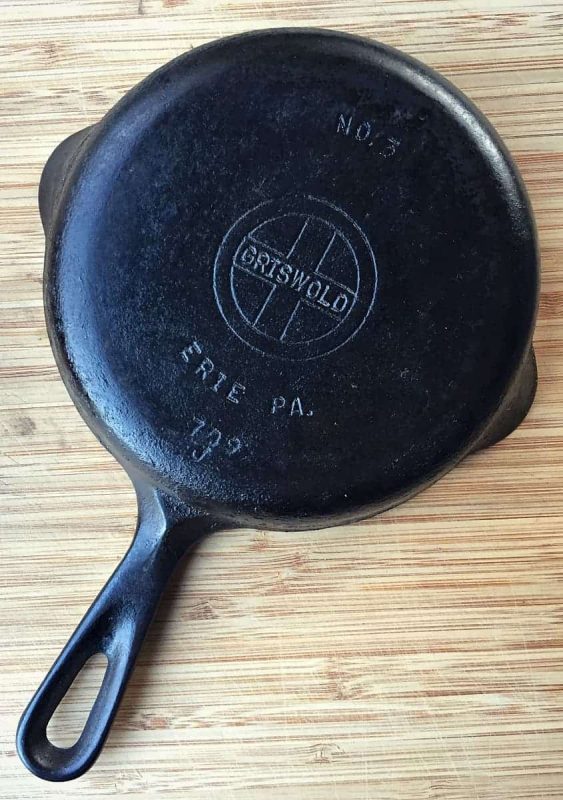
The other option is to get a new cast iron, and Lodge brand is the most popular one that people usually go for. They are inexpensive and work well, but do not have that smooth shine that is so sought after. The reason for this is that they come “pre-seasoned”, which is really not ideal. However, they do work, it just may take a while of use before they become as non stick as a vintage pan.
Restoring and Seasoning Cast Iron
If you do find a good deal on a vintage cast iron that needs a little love, it can be done. Depending on what shape the pan is in, it will take a little or a lot of elbow grease, but it’s worth it in the end! My husband Joel restored this Wagner skillet into a thing of beauty! Just look at that shine.
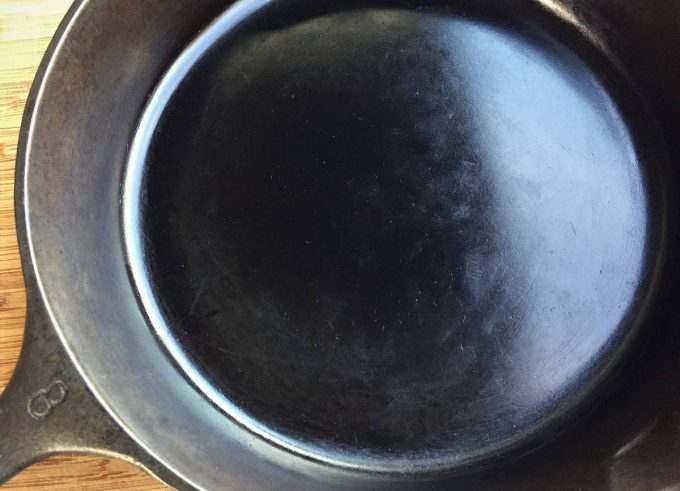
After you’ve cleaned off all the rust and debris, the pan will need to be seasoned again. This is also how you will re-season any cast iron pan that has been completely stripped of its seasoning. Coat the entire pan with a very thin layer of oil, one with a higher smoke point like coconut oil is best (but some people swear by bacon fat). Wipe off any excess oil and put upside down in a 400°F oven with a sheet pan on the rack below it to catch any drips. Carefully remove after two hours and let it cool completely.
Ideally you want to do this whole process three times total to achieve proper seasoning, but you can also just cook a whole lot of bacon in the pan before using it for other cooking.
Cleaning Your Cast Iron Cookware
This is probably what turns most people off of getting a cast iron skillet, as they assume that cleaning and caring for cast iron is difficult, but it really shouldn’t be that way. Cleaning a cast iron skillet is actually pretty easy, and if it’s well seasoned it’s probably even be quicker than washing a regular pan!
The first step is to scrape out all of the food bits that are left in the pan. The best way to do this is with a metal spatula that has rounded corners. If there is food caked on, you can also add a little bit of hot water to the pan as you scrape to help loosen it.
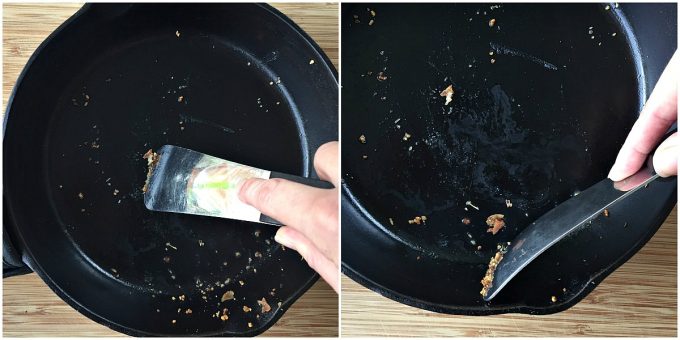
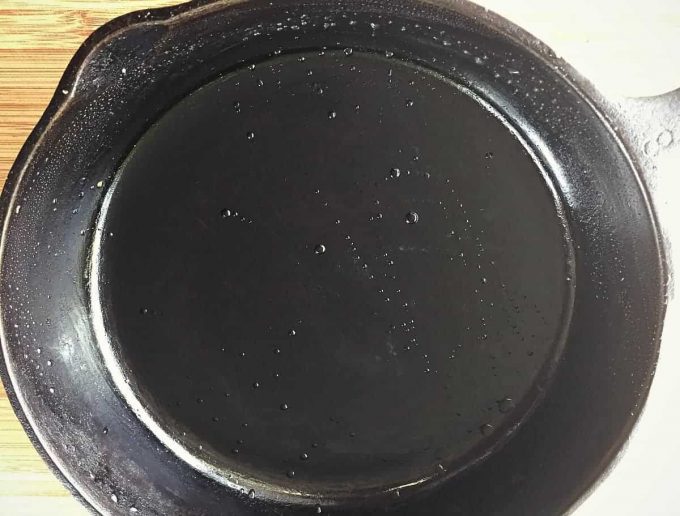
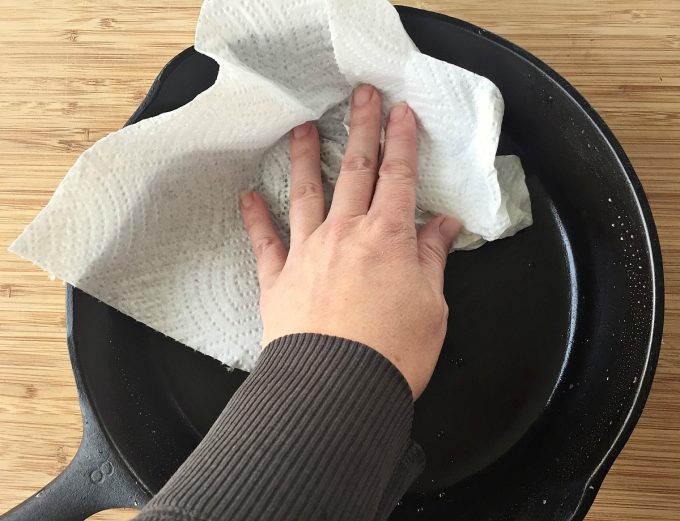
Cast Iron Cooking
This is the most fun part about having a cast iron skillet, cooking with it! I use mine for everything, from sauteing veggies to cooking eggs to making desserts. The nice thing about cast iron cookware is that they can go from stove top to oven without any worry.
I have every size and shape, from small enough to perfectly fit two eggs to large dutch ovens that I make my No Knead Sourdough Bread in. One of my very favorite dessert recipes to make in cast iron is this Blueberry Cornmeal Skillet Cake. Delicious!
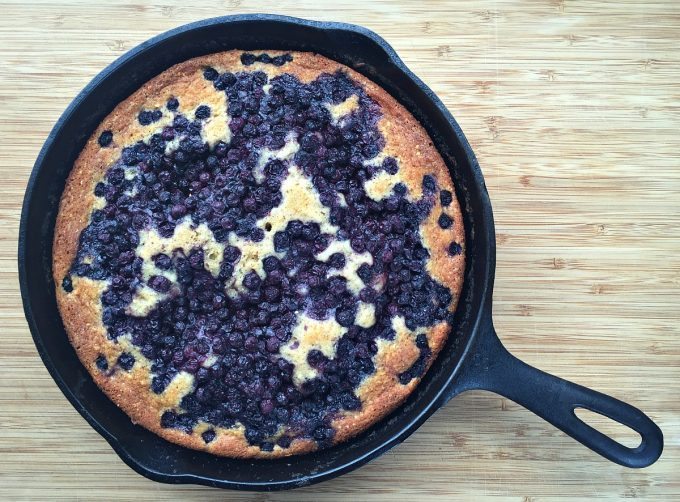
- Skillet Pear and Blackberry Crisp
- Plum and Lemon Upside Down Cake with Lavender Whipped Cream
- Skillet Peach and Blackberry Cobbler
- No Knead Sourdough Rye Bread
- Sourdough Blueberry Pancakes
You can also find some great recipes and inspiration on my Cast Iron Cooking Pinterest board!
I hope this gives you some ideas for how to cook with cast iron! What is your favorite thing to cook in your cast iron skillet?


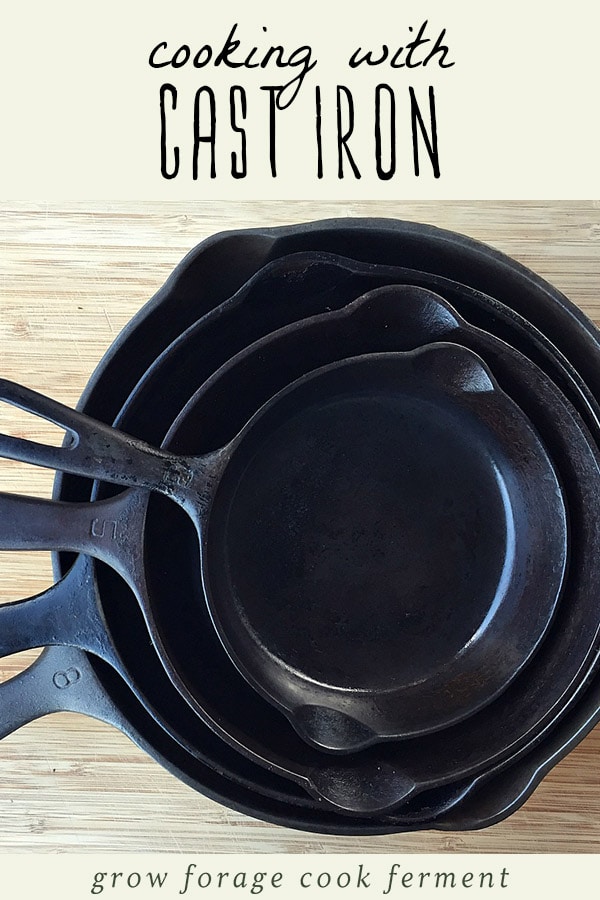
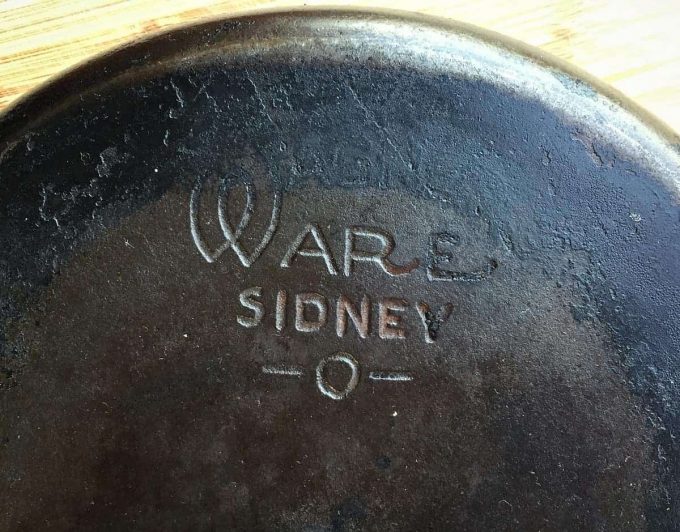

Can they be used on a smooth glass top stove? Or can they harm or crack the stove top?
They can be, I’ve seen people do it, but be very careful as to not crack the stove top!
I really enjoy my cast iron fajita skillet. It is a small skillet with low sides in an oblong shape. I use it almost daily for 1 or 2 servings of eggs, meats, burgers, veggies, etc. Perfect for grilled cheese sandwiches. :-) Being smaller than my other skillets, it is easier to lift from the cabinet.
Good advice with the exception of wire wheeling your pans. Terrible idea as it can ruin the value and ability to hold seasoning. Search other methods on Google for striping pans; there are a ton of way to do but one or two old methods that just aren’t recommended anymore.
I sometimes boil some water in the pan to help release caked on food, or things that have stuck to the pan. Its much easier to scrape a spatula in the water to make it come loose. To me it helps. You can go with your normal way for cleaning cast iron cookware after that.
Good article. I love my cast iron! That’s about all I use.
Nice article. I own one small square and a larger square Griswold my father found at a flea market 40 yrs. ago. He told me he paid about $1.50; what a bargain. I have a 13″ Lodge frying pan, a Lodge square grill pan and a 5 Qt Lodge Dutch oven. Clean up is easy since I run water on it after I plate, scrape if necessary, wipe clean and put it into the oven to be sure that all water has evaporated and re-oil.
Best advice I ever got for cleaning cast iron – do it now. Don’t ever let food waste sit in the pan or it will cook on. once I got into the habit of plating food and immediately running the pan under hot water, my cast iron has been easy to clean. I love using it.
Most of what I have read recently indicates that soap exposure is not harmful to cast iron seasoning. I believe scraping with a metal spatula actually has more chance to damage, via chipping the polymerized oil from the cast iron, vs a quick soapy rinse. Soap shouldn’t break the bonds that have been created between the metal and the seasoning. I’ve used soapy water on several of mine when they have gotten excessively caked on food and they have been just fine after that.
That all being said, I usually just scrub with a plastic pad and use hot water. Stubborn bits get kosher salt, a bit of oil, and some scrubbing.
I personally wouldn’t use dish soap because the whole point of it is to cut grease, which isn’t what we want to happen with cast iron. That said, it would probably take using soap over and over to cause any real issue. I’ve been scraping my pans for years and they are still smooth as ever without any damage, but I don’t get too crazy with it. If the food is really caked on, a little hot water does the trick. I’m sure there are many methods that people use successfully, thanks for sharing yours! :)
A quick little wash with dish soap will not hurt the seasoning on cast iron. It is no longer oil, but polymerized oil…basically plastic. Scraping with a metal spatula will also not harm it, unless you are really gouging at it, then maybe. The best way I have found to clean really stuck, burned on stuff is to put on over low flame, add a little water to a gentle boil and rub it it around with a metal spatula. All the bits break loose really easy, and then you just rinse, dry, re-oil for the next go-round.
This article reminded me of the benefits of cast iron cooking. I will cook my eggs in one today!
Thank you, Colleen!